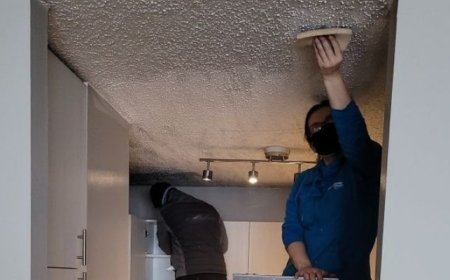Understanding the ROI of Fence Installation: Is It Worth the Cost?
Explore how investing in fencing impacts property value, security, and aesthetics—and whether the fence installation cost pays off in the long run.
When deciding to invest in a new fence, many homeowners wonder if it's worth the expense. Beyond aesthetics and security, a well-installed fence can offer a strong return on investment (ROI). But how does fence installation cost align with potential gains in property value and savings?
What Does ROI Mean for Fence Installation?
ROI measures how much value or benefit you gain from your investment compared to the cost. For fencing, ROI comes from:
-
Increased property value
-
Improved curb appeal
-
Enhanced security and privacy
-
Reduced liability (e.g., pet containment, pool safety)
Factors That Influence ROI
1. Material Type
-
Vinyl and Metal: High durability, low maintenance, good long-term ROI
-
Wood: Great for aesthetics, moderate ROI depending on upkeep
-
Chain Link: Low cost, low visual appeal, functional ROI only
2. Neighborhood Expectations
Installing a high-end fence in a modest neighborhood may not yield a great return, while matching local norms can maximize your resale appeal.
3. Fence Condition and Lifespan
Well-maintained fences hold value. A deteriorating or misaligned fence can reduce property appeal, even if newly installed.
Estimating ROI on Fence Installation
According to industry estimates:
-
Average ROI ranges between 50% to 70% depending on location and material.
-
A $6,000 fence could potentially add $3,000 to $4,200 to property value.
Additional Financial Benefits
-
Lower Insurance Premiums: Especially for pool fencing or security-enhancing designs.
-
Energy Efficiency: Certain designs provide wind or sun breaks, lowering HVAC use.
-
Reduced Landscaping Costs: Protects against wildlife or wind erosion.
When Fence Installation Is Most Worthwhile
-
Youre preparing to sell and want to enhance curb appeal
-
You need clear boundaries for pets, children, or neighbors
-
You're upgrading outdated, damaged fencing thats hurting your homes appearance
Common ROI Mistakes to Avoid
-
Choosing overly ornate or high-cost materials in low-value areas
-
Ignoring local permit rules (noncompliant fences can hurt appraisal value)
-
Poor installation quality always affects long-term value
Conclusion
While not all fencing projects offer the same return, smart choices in design, material, and timing can boost your ROI and justify the fence installation cost. Think long-term a strong, stylish, and well-placed fence adds more than just security.
FAQs
Q1. Does installing a fence increase home resale value? Yes, especially if the fence adds privacy, security, or visual appeal that matches buyer preferences.
Q2. What type of fence offers the best ROI? Vinyl and well-maintained wood fences usually provide the highest return.
Q3. How long does it take to recover the cost of a fence through ROI? Typically within 510 years, depending on home value appreciation and use.
Q4. Is ROI higher for front yard or backyard fencing? Backyard fencing offers more privacy and practical benefit, usually resulting in better ROI.
Q5. Should I replace my fence before selling my house? If the current fence is damaged or unsightly, replacing it can improve offers and reduce buyer objections related to repairs.







































